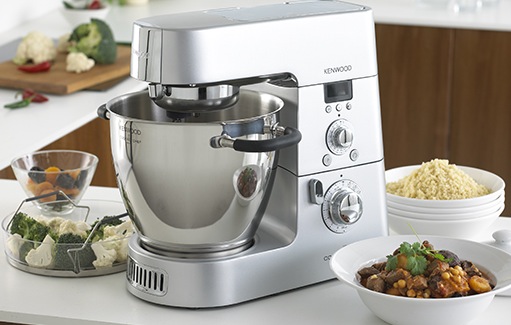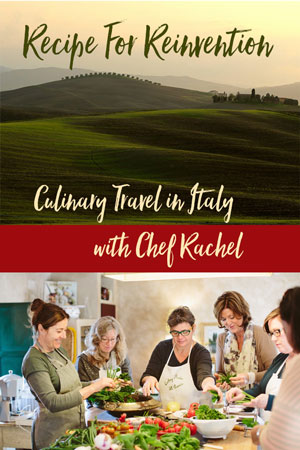It’s time for soup.
(This article, written by me, was originally posted on abcnews.com on 10/12/12)
Entering the Park Avenue Armory for the first of three days that would be the 2012 StarChefs.com annual International Culinary Conference in New York City, I felt like I stepped into a full-color dream I might have had after eating spicy food and watching a weekend marathon of cooking shows.
The line-up for the conference geared toward industry professionals included culinary show veterans Seamus Mullen (Next Iron Chef competitor), Mike Isabella (Top Chef competitor), Paul Qui (Top Chef Winner), Michael Laiskonis (Iron Chef competitor), Alex Stupak (Iron Chef competitor), Jordan Kahn (Hell’s Kitchen Guest Judge), Elizabeth Faulkner, (Top Chef Masters), John Besh (Top Chef Masters), Susan Spicer (Top Chef, Treme), Marcus Samuelsson (Top Chef, Top Chef Masters, Chopped), Johnny Iuzzini (Top Chef: Just Desserts), Iron Chef Mario Batali, and Iron Chef Masaharu Morimoto. Award winning chefs from US and international top restaurants, food critics, cookbook authors, sommeliers and mixologists rounded out a program that promised to explore “Origins and Frontiers: The Archaeology of Modern Cuisine.”
I was there to see what these culinary leaders were cooking up in their professional kitchens that would most likely filter down to home cooks in the years to come. I spoke with Jean Armstrong, director of brand marketing for Williams-Sonoma, at their booth for the conference. ”Who would have thought, even five years ago, that one of our best-selling pieces of equipment would be a professional-grade blender that retails for just under $600?”
Armstrong noted that interest in high-end equipment and professional-level techniques has skyrocketed along with the growth of culinary entertainment. Trends that used to take a few years to show up in home kitchens, if ever, are now in our pantries and on our countertops within months of being viewed on favorite cooking shows.
Williams-Sonoma is a consumer retailer that walks the fine line between marketing to home cooks and professionals. Immersion blenders, sous vide circulators, vacuum sealers, heavy stainless steel pans and Japanese knives for pros and serious amateurs find shelf space alongside ready-to-eat sauces, easy-to-make mixes and colorful tablescapes for those whose culinary stirrings are less ambitious.
The next big thing in high-end equipment Williams-Sonoma is betting home cooks will find a necessity is The Kenwood Cooking Chef, hitting stores in early November 2012. The Kenwood is an all-in-one center for everything a home cook might need to feel like an Iron Chef. With its array of heavy-duty attachments and add-on pieces it can take on food processing, stand mixing, whisking, dough and pasta making, meat and grain grinding, cooking (it has a convection heating element) and more.
A demonstration by one of Sweden’s renowned chefs, Mathias Dahlgren highlighted a humble head of cauliflower. He and his sous chef composed a dish that was nothing but cauliflower, cooked using six different techniques and producing no waste whatsoever. Steaming, grating, braising, sautéing, roasting and raw. A little acid. A little brown butter and he presented us with a plate that was both complex and elegant in its simplicity. A short film he showed, made about him in Sweden, highlighted his near-religious relationship with produce and how he grows it, forages for it and uses it in his two restaurants there.
The love affair with fresh ingredients, high quality, heirloom, heritage, small-farm, estate-grown, handpicked, and artisanally-produced was in evidence in nearly all the chefs’ demonstrations and among the product and equipment vendors present as well. I felt great optimism about this trend making its way even further into our national consciousness. The more quality, sustainable, healthful farming and food-producing practices that mainstream consumers demand, the more our food-manufacturing sector will have to comply. The conference title “Origins and Frontiers” began to make sense. Perhaps the next frontier is to fully recapture our roots in food. The conference made me proud to be a chef, knowing that it is those who cook for a living that are leading this trend back toward eating, cooking and living well.
John Besh and Susan Spicer from New Orleans, along with the Louisiana Seafood Board provided another insight into a trend that has long been brewing in restaurants across the country. That trend, as John Besh put it while stirring up his Mom’s Red Fish Court Bouillon, is “creating a relationship with food and where it comes from…and being passionate about our heritage…the stuff we grew up with…preserving that.”
Besh continued this line of thought as he responded to a question from a chef in the audience about how he’d serve such a rustic dish in his fine-dining establishments. Besh said he makes an effort to include these regional, home-cooking dishes as specials now and then because “people aren’t cooking at home, or learning how to cook at home as much as they used to, so it’s kind of up to restaurants to preserve these traditions.”
Is a big revival of regional, home-style foods going to make it’s way back into home kitchens, inspiring home cooks to learn vintage recipes, make them their own and then passing them down to their children and grandchildren? Will we sit back and leave it up to the restaurant and celebrity chefs to do it while we watch? I purchased a copy of Besh’s latest cookbook at the conference. Its title tells you which way Besh is hoping things turn out. It’s called “My Family Table, A Passionate Plea for Home Cooking” and he signed it, “from my table to yours.” He’ll preserve the recipes in his restaurants if he has too, but he’d rather you gather your family around and make culinary history yourself.
StarChefs.com, an online magazine for culinary professionals, whose offices are located in New York City, produces the International Culinary Conference. This year’s conference was its seventh annual event.
Ginger-Poached Trout with Citrus Vinaigrette
Recipe courtesy “My Family Table” by John Besh
Serves 6
INGREDENTS
2 lemons, sliced
1 onion, sliced
1 bunch fresh thyme (6-8 sprigs or so), tied with string
1 1-inch piece ginger, peeled and sliced
2 cloves garlic, sliced
Pinch red pepper flakes
1 bay leaf
Salt
Freshly ground black pepper
6 trout filets
For the vinaigrette:
½ cup Satsuma or orange juice
½ cup olive oil
6-8 basil leaves, sliced into thin ribbons
Salt, freshly ground pepper to taste
2 cups baby greens
Fill a large heavy-bottomed pot with 2 inches of water. Add the lemons, onions, thyme, ginger, garlic, red pepper, and bay leaf. Place the filets in the poaching broth and simmer for 6-8 minutes, until just cooked through. Remove the pot from the heat.
For the vinaigrette, whisk together the orange juice, olive oil, basil, salt and pepper until well incorporated. In a bowl, toss the greens with the vinaigrette. To serve, carefully remove the fillets from the poaching liquid, put a fillet on each plate, and top with the salad greens.
I was a Fish O’ Filet addict. If you don’t know what I’m talking about, (I suspect you do), a FOF is the seafood offering found on the McDonald’s menu. It’s a thickly-breaded square of white, flaky fish, deep-fried to a golden hue, served on a soft, white-bread bun topped with another square of American cheese, and a generous squirt of tartar sauce. My very first real job, at 16, was inside a local McDonalds (River Edge, NJ), when McDonald’s still looked like futuristic little bubble-buildings dropped down from the sky by aliens, squeezed in between two-story golden arches that were most likely the landing pods for the alien mother ship. Or something like that.
When I got a break from making milkshakes—we made them with big metal cups that slid onto actual spinning mixers back then, the kind you’d see in old-fashioned soda fountains. No soft serve dispensing machines yet. My blue polyester uniform would be covered in the thousands of milkshake dots that flew off the spinners each time I’d remove a smoothly spun shake. Three hours into my shift, I’d get the nod from my manager to grab something to eat and take a break. I’d fashion myself a double Fish O’Filet sandwich with extra cheese and sauce and nothing, nothing could have been more delicious to me at that moment in my life. We weren’t the majority—us FOF lovers. Most went for the Quarter Pounders and Big Macs—there were no Nuggets or Happy Meals—but those of us who loved that sandwich really loved it. When I was 30 years-old and pregnant with my first child, after 10 years of living a mostly organic and whole-food lifestyle, I craved those sandwiches and indulged in them more than once during those nine months.
Now, when I have that fried, golden-hued, fish-and-sauce jones, I turn to something I can wrap my cheffy, fresh-food-eating, gluten-intolerant brain and stomach around, and these cakes, bursting with flaky cod and smoked trout, coated in cornmeal and splashed with a kicky red pepper coulis is just all a former FOF junky could want.
I roast the peppers for this to get that maximum charred flavor I love , but a shortcut would be to use jarred roasted peppers. If you do, make sure you rinse them well of the slimy liquid they come in.

Peel and de-seed them…
They are so sweet and aromatic you have to stop yourself from just slicing one up eating it with a hunk of dry-aged cheese, some good olive oil, torn-off piece of crusty bread. Save it for the sauce.
The cod is lightly seasoned and pre-baked for a short time.
I used a smoked trout for this that my local fishmonger does in-house, but you can find smoked trout in the deli section of most grocery stores. The recipe can be made with crabmeat too for a more traditional preparation. I like what the trout brings…a smokey richness.

Make this cake gluten free by substituting the breadcrumbs with a cornmeal/corn flour mixture, like I did.
You form the cakes, roll them in bread crumbs, or cornmeal (again, your preference, but I love the crunch and texture of cornmeal here, even if I wasn’t going gluten-free), and pan-fry in a small amount of oil.
Remember, small batches. You don’t want to crowd them and bring the oil temp too far down. You’ll end up with oil-sogged cakes. And you don’t want to have the oil too hot, or they will quickly burn without the inside being warmed through. I prefer to just lightly fry them on each side to the color I want, then pop them in the warm oven to finish warming through while I fry up all the batches.
Put your sauce in a squirt bottle and knock yourself out making it fancy on a plate. Or, get yourself a soft, white-bread bun, a square of cheese and make it the best FOF sandwich you’ve had in a long time.
Cod and Smoked Trout Cakes with Roasted Pepper Coulis
Serves 6
INGREDIENTS
For the coulis:
2 medium red bell peppers
2 garlic cloves, peeled
1/2 small red onion, coarsely chopped
1 small jalapeño, seeded and coarsely chopped
1 tablespoon extra-virgin olive oil
1 teaspoon red wine vinegar
1 teaspoon kosher salt
For the cod cakes:
1 pound skinless cod fillets
Salt and freshly ground pepper
1/2 pound lump crabmeat, picked over (or smoked trout)
1 1/2 cups fresh breadcrumbs (or coarsely ground corn flakes, or pre-ground corn flake crumbs)
2 tablespoons minced red bell pepper
2 tablespoons minced celery
2 tablespoons minced scallions
2 tablespoons fresh lemon juice
1 tablespoon Dijon mustard
3 tablespoons finely chopped fresh flat-leaf parsley
1 cup plain dry bread crumbs (or medium ground cornmeal mixed with 2 T of corn flour)
1/4 cup plus 2 tablespoons high heat veg oil (canola, grapeseed, safflower)
PROCEDURE
1 For the coulis: Preheat the oven to 400°. Place the whole bell peppers on a baking sheet and roast for about 20 minutes, turning once or twice during the process until the skin is charred in several places. Add the rest of the vegetables to the pan and continue to roast for 20 more minutes until everything is tender. Remove from oven. Leave oven on but reduce heat to 325. (You will use the warm oven to hold the finished crab cakes as you cook them. Place the bell peppers in a bowl and cover with plastic wrap for 10 minutes.) The steam from the peppers will help to loosen the skin and make it easier to peel. Peel and seed the bell pepper. Transfer all the vegetables and any accumulated juices, along with the oil and vinegar to a blender or food processor and puree the vegetable mixture until smooth. Season with salt to taste. Hold aside.
2.Season the cod fillets with salt and pepper and arrange them on a lightly oiled nonstick baking sheet. Bake for about 10 minutes, or until the flesh flakes easily. Let cool.
3. Flake the cod into a large bowl and add the crabmeat (or smoked trout), fresh bread (or corn flake) crumbs, red bell pepper, celery, scallions, lemon juice, mustard and 2 tablespoons of the parsley. Season with salt and pepper.
4. On a plate, toss the dry breadcrumbs (or cornmeal mixture) with the remaining 1 tablespoon of parsley and season with salt and pepper. Divide the cod and crab mixture into 12 parts and shape each into a 1-inch-thick cake. Coat each cake well with the seasoned breadcrumbs (or cornmeal mixture).
5. If needed, gently re-warm the coulis in a nonreactive saucepan. Heat 2 tablespoons of the vegetable oil in a large nonstick skillet. Add 4 of the cod and crab cakes and cook over moderately high heat until golden and crisp on the bottom, about 3 minutes. Gently turn the cakes and cook until golden on the other side, 2 to 3 minutes longer. Do not crowd the pan. Make sure the oil is not smoking hot or else you will get burnt cakes with a raw inside. Cook them crispy golden brown and don’t worry if they are warmed through (remember the fish is already pretty much cooked.) Transfer to a platter and keep warm in a low oven where they can finish warming all the way through. Fry the remaining cakes in 2 more batches, using 2 tablespoons of oil for each batch.
6. Spoon the red pepper coulis onto 6 large plates. Set 2 cod and crab cakes on each plate and serve.
Make Ahead: The cod and crab mixture as well as the coulis can be made ahead and refrigerated separately for up to 8 hours. Do not form cakes ahead. Make cakes and roll in the crumb mixture just before frying or else the coating will become too saturated.
















